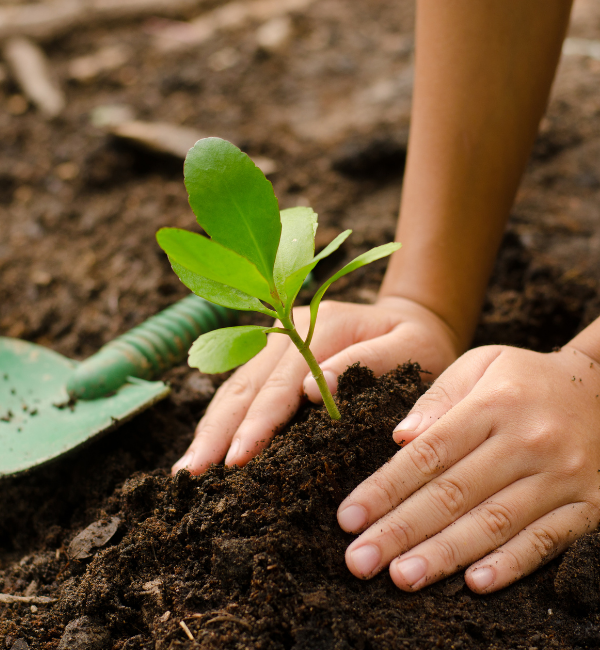Food Web Jenga - Climate Change Extension

Students will learn about the importance of food webs and how climate change can disrupt them.
What You Need
Activity 1: Food Chains
- Food Chains Worksheet (Optional)
Activity 2: Food Web Jenga
- Painted Jenga blocks:
- Green blocks (23)
- Blue blocks (13)
- Red blocks (11)
- Black block (1)
- Playing cards
Activity 3: Beauty of Biodiversity
- Painted and labelled Jenga blocks
- Green blocks
- Grass (8)
- Seeds (8)
- Wildflowers (7)
- Blue blocks
- Grasshoppers (8)
- Mouse (5)
- Red blocks
- Snake (6)
- Weasel (5)
- Black block
- Hawk (1)
- Green blocks
- Playing cards
- Beauty of Biodiversity Worksheet
Activity 4: Sensitive Species
- Sensitive Species Worksheet
- PowerPoint (optional)
Guide:
Presentation:
Additional:
What To Do
Pre Activity Prep
- Label the printed blocks with the following organisms names with a sharpie.
- Green blocks
- Grass (8)
- Seeds (8)
- Wildflowers (7)
- Blue blocks
- Grasshoppers (8)
- Mouse (5)
- Red blocks
- Snake (6)
- Weasel (5)
- Black block
- Hawk (1)
- Green blocks
Introduction
- Introduce the topic of food chains and explain what a tropic level means.
- Discuss the difference between a predator and prey.
Activity 1: Food Chains
- Split students into groups to come up with food chains for one of the different habitats listed below. Challenge the students to come up with as many tropic levels as possible for the habitat they are assigned. They can use the associated worksheet to fill in their answers.
- Forest
- Mountain
- Desert
- Ocean
- Discuss the food chain examples together and try to come up with more species at each level for each habitat.
- Discuss ways that food chains can be disturbed and how humans can impact food chains.
Activity 2: Food Web Jenga
- Split students into groups of 3-4.
- Stack Jenga pieces with green on the bottom, then blue, then red, with the black piece in the middle of the top row (between two red blocks).
- Shuffle the playing cards and then place them face down.
- Take turns drawing cards from the deck. Read the card aloud and follow the instructions. Only the block being removed or returned may be touched.
- Put the used cards into a discard pile.
- Place removed blocks into a discard pile off to the side.
- Continue taking turns until the tower falls and the food chain collapses or all the cards are used up.
- If groups finish early, they can reset the blocks and play again.
- Ask "what happened to the food chain when different blocks were removed?"
Activity 3: Climate Change
- Have students answer question #1 and #2 on the worksheet.
- Have students lay all the blocks out flat in front of them. Follow the prompts on questions #3 and #4.
- Discuss the worksheet questions.
Activity 4: Sensitive Species
- Present the species background information on the PowerPoint (slides 4-6).
- Have students fill out the table on the worksheet.
- Discuss their answers.
Conclusion
- Students can fill out the answers to the following questions on page #5 of the worksheet.
- "How do humans rely on ecosystems?"
- "What are some actions we can take to protect the biodiversity of ecosystems?"
- "What ways can we reduce greenhouse gas emissions to help slow climate change?"
Discovery
Human interactions and climate change can alter the interactions and populations of species within a food web. Biodiverse and healthy ecosystems are often more resilient to disruptive events.
Humans rely on healthy food webs and ecosystems for many reasons! Some reasons include provisioning services (like food, medicine, clothes from plants) and regulating services (like decomposition, erosion and flood control, purifying air). As our climate continues to change, some food webs and ecosystems will be at risk.
Check out these websites for more information!
- U.S. Department of the Interior: 9 animals that are feeling the impact of climate change
- The National Wildlife Federation: Ecosystem Services
- United States Environmental Protection Agency: Climate Change Impact on Ecosystems
- The National Wildlife Federation: American Pika
- NOAA Fisheries: Leatherback Turtle
- The National Wildlife Federation: Moose
Note: This workshop was adapted from the original Food Web Jenga activity created by the University of Manitoba. Found at: https://letstalkscience.ca/volunteer-hands-on-activities/food-web-jenga
What's Happening?
Human interactions and climate change can alter the interactions and populations of species within a food web. Biodiverse and healthy ecosystems are often more resilient to disruptive events.
Why Does It Matter?
Humans rely on healthy food webs and ecosystems for many reasons! Some reasons include provisioning services (like food, medicine, clothes from plants) and regulating services (like decomposition, erosion and flood control, purifying air). As our climate continues to change, some food webs and ecosystems will be at risk.
Investigate Further
Check out these websites for more information!
- U.S. Department of the Interior: 9 animals that are feeling the impact of climate change
- The National Wildlife Federation: Ecosystem Services
- United States Environmental Protection Agency: Climate Change Impact on Ecosystems
- The National Wildlife Federation: American Pika
- NOAA Fisheries: Leatherback Turtle
- The National Wildlife Federation: Moose
Note: This workshop was adapted from the original Food Web Jenga activity created by the University of Manitoba. Found at: https://letstalkscience.ca/volunteer-hands-on-activities/food-web-jenga
